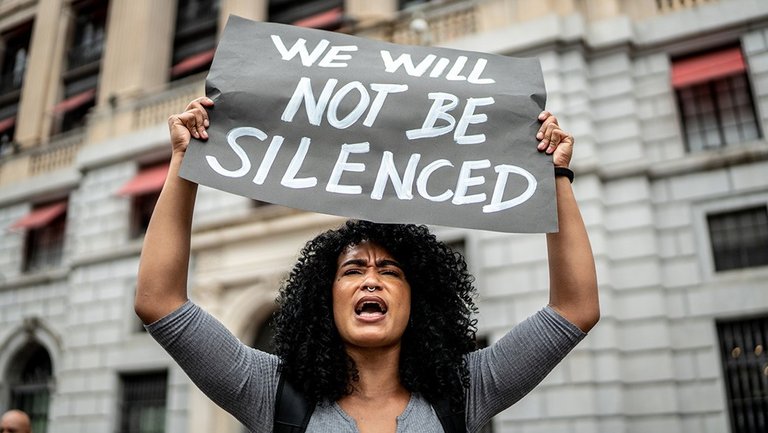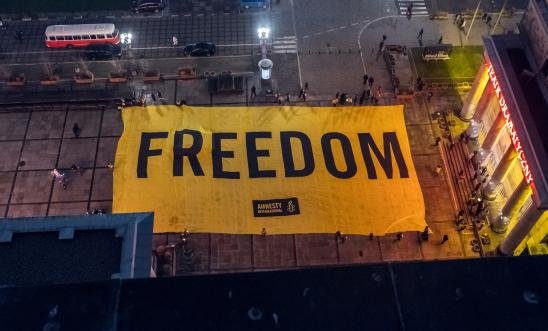Freedom of speech The founding fathers named the first 10 amendments to the constitution, the Bill of Rights, the first of which guarantees some of the most fundamental freedoms of our country, including freedoms of press, protest, religion, assembly, and last but certainly not least, freedom of speech. The definition of free speech and its limits, such as censorship and hate speech, have been debated since the initial adoption of the First Amendment. A fundamental building block of liberty allows citizens to express their ideas and bring about change that reflects the needs of the people. It also gives a voice to sometimes conflicting or dissenting opinions, which is believed to inspire the healthy debate that moves society forward.
When drafting the First Amendment, James Madison and his colleagues drew from many of the great thinkers of the day. One of the most influential works in colonial America at the time was a collection of essays known as "Cato's Letters." The writers were two British men. John Trenchard and Thomas Gordon, who wrote under the pseudonym Cato Cato, were one of Julius Caesar's chief opponents in the Roman Senate, known for his incorruptibility and defence of the republic. They published 144 essays promoting liberty and criticising the overreach of the English Crown. In one essay, they wrote, "Freedom of speech is the great bulwark of liberty; they prosper and die together." This idea and others in the letters inspired much of the Constitution and Bill of Rights.
From Madison's own note, we know that he intended freedom of speech to be a natural right, not something granted by the government. Of course, free speech is not an unlimited right, and because the First Amendment doesn't establish what those limits are, we've spent centuries debating what is and what isn't free speech, a debate allowed by our right to free speech.
The recent history of free speech can be traced to a long and winding path of landmark supreme court cases prior to world war the supreme court had virtually never ruled on cases on the freedom of speech and had done little to protect dissenting voices then in 1918 the court decided in "schenck v.united states that the government was allowed to limit speech that would create a clear and present danger in 1942 again in a time of war the court limited protection for fighting words speech that can provoke harm to another in the case of chaplinsky "v.new hampshire" the year after however in west virginia v. barneet the court determined that making student recite the pledge of allegiance violated their free speech rights in 1989 flag burning rule as protected free speech in texas v. johnson as wzs cross burning in 2003 virginia v.black unless it's being done to intimidate .
Freedom of expression is a fundamental right enshrined in article 19 of universal declaration of human rights which states that "everyone has the right to feesom of option and expression this right includes freedom to hold opinion without interference and to seek recevie and important information and ideas through any media and regardless of frontiers" this right is also an enabling right ensuring openness transparency and accountability in democratic societies however freedom of expression is not an absolute right and may be lawfully restricted in specific and limited conditions under international human right law and specifically article 19 of the international covenant on civil and political right or ICCPR The three-part test determines whether a restriction on freedom of expression is legitimate. Any restriction on freedom of expression must thus be provided for by law, pursue a legitimate aim, and be necessary for a legitimate purpose.
Restrictions must be provided for by law to freedom of expression. Restrictions should be provided for by a prior existing or binding norm adopted by competent authorities and which is formulated with sufficient precision to enable citizens to regulate their conduct accordingly. The law or norm must therefore be clear, publicly accessible, and easily understood by everyone; otherwise, it would risk having a chilling effect on free speech by broadening the scope of permissible restrictions. Article 19, paragraph 3, of the ICCPR says that respect for the right or regulation of others is second to the protection of public health, third to the protection of national security or public order, and lastly to the protection of morals.
These grounds for restrictions must be narrowly framed in order to ensure compliance with international law provisions. Restrictions should be effective, proportionate, and the least restrictive possible to achieve the legitimate and pursure; however, the criteria of necessity and proportionality are often the most complex according to the international standard court, and other public authorities should thus consider the context in which the restriction is applied.
THANKS YOU
Your readership is a gift that fuels my passion for writing. Thank you for investing your time and attention in my blog. Your support inspires me to keep sharing and creating.

Find me on :
This is my participation post for Initiative:MAYINLEO
Posted Using InLeo Alpha


